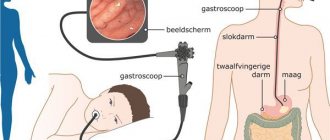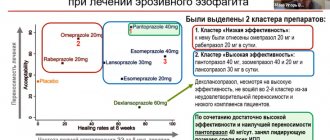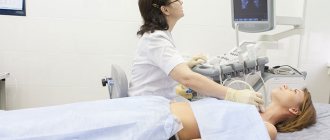Dysphagia refers to pathologies of the esophagus and larynx. With this condition, swallowing liquids and food is difficult or impossible. The causes may include both disturbances in the functioning of various organs and diseases of a neuralgic nature. To make a diagnosis, a thorough examination is necessary, and therapeutic measures are selected individually for each patient.
Pathology cannot be left without attention, since it is impossible to do without the help of doctors. Doctors at the 24-hour Yusupov Hospital specialize in this pathology and successfully cope with dysphagia of any severity.
Causes of dysphagia
The disease can occur against the background of both genetic and acquired pathologies. The most common cause of dysphagia is pathological processes in the esophagus, oropharyngeal cavity, heart and brain. Experts include the following common factors that cause the disease:
- Malignant or benign neoplasms in the oropharynx (tumors);
- Inflammatory diseases of the esophagus and its mucous membrane;
- Cancer of the esophagus or stomach;
- Purulent-inflammatory processes in the oropharynx (sore throat, abscess, etc.);
- Diverticula of the esophagus (protrusion of its walls);
- Complete or incomplete paralysis of the pharyngeal muscles;
- Various injuries of the esophagus (knife and bullet wounds);
- Injuries due to sharp foreign objects entering the esophagus;
- Quincke's edema due to severe allergies;
- Enlarged heart after coronary artery disease, heart attack, heart failure;
- A chronic disease accompanied by the reflux of acidic stomach contents into the esophagus;
- Atherosclerotic lesion of the vascular system of the brain;
- Narrowing of the esophagus of various etiologies;
- Multiple system atrophy (death of certain groups of nerve cells);
- Aortic aneurysm (protrusion of the wall of a certain area of the aorta);
- Acute renal or liver failure;
- Severe diseases of the muscles, vascular system and skin (dermatomyositis);
- Injuries to the brain or cervical spine;
- Hiatal hernia;
- Severe hypertension (with damage to target organs);
- Cerebrovascular accidents;
- Systemic lupus erythematosus, affecting the kidneys, musculoskeletal system and other organs;
- Varicose veins in the esophagus;
- Chemical burns of the esophagus (acid, alkali);
- Systemic scleroderma (autoimmune connective tissue disease).
Dysphagia is often caused by a severe toxic infectious disease (botulism), Parkinson's disease (shaking paralysis), encephalitis and neuromuscular diseases (polymyositis, myasthenia gravis and others). In childhood, dysphagia most often occurs with cerebral palsy (cerebral palsy).
Each disease is assigned a code according to ICD 10 (International Classification of Diseases). Dysphagia is coded R13 and refers to pathologies associated with difficulty swallowing.
A high risk group includes children with paralysis of four limbs, athetosis (convulsions), congenital pathologies of the brain, esophagus and pharynx, as well as elderly people with severe chronic diseases.
Classification
Pathology varies depending on the location of the lesions, type and severity. In medical practice, the classification of dysphagia is as follows:
By location
- Oropharyngeal (oropharyngeal) - divided into oral, pharyngeal and cricopharyngeal dysphagia. The lesions are localized in the oropharynx area. The bolus of food moves from the pharynx to the esophagus with difficulty. When trying to swallow, the patient may choke, and the contents may enter the nasal cavity or trachea. Oropharyngeal dysphagia occurs due to a disorder of the neuromuscular connection.
- Esophageal - affects the distal (lower) zone of the esophagus, and difficulty swallowing occurs in the cervical region. Symptoms are similar to the oropharyngeal form. Therefore, an accurate diagnosis can only be determined by a doctor during an examination of the patient.
- Cricopharyngeal incoordination - with this disease, the contraction of certain fibers is impaired, which leads to problems with relaxation of the cricopharyngeal muscle. This often causes protrusion of the walls of the esophagus and the development of pathological processes in the lungs.
By appearance
- Paradoxical - characterized by difficulty swallowing, while solid food passes better than liquid food. Most often occurs against the background of diseases of the esophagus. With tumor neoplasms, patients first refuse solid food, then cereals and soups, and then drinks. Sometimes paradoxical dysphagia weakens or even disappears, but the stage of false remission is short-lived. After some time, the disease makes itself felt again.
- Sideropenic is a dystrophic change in the mucous membranes of the esophagus. Most often this is a consequence of iron and nutrient deficiency in the human body. Is genetic or acquired. Lack of iron causes a disruption in the production of oxidative elements, which leads to pathologies of the muscles responsible for swallowing.
- Neurogenic - caused by a disorder of the nervous system and is characterized by difficult formation of a food bolus in the oral cavity or obstruction of food through the esophagus. The most common factors causing neurogenic dysphagia are major ischemic or hemorrhagic stroke and serious traumatic brain injury.
- Psychogenic - when pathology occurs while eating, the patient feels a “lump” in the throat or pain in the chest area. In addition to impaired swallowing functions, severe heartburn is noted. The cause of the pathological condition is frequent stress and nervous strain.
Due to the occurrence
- Functional - also called nervous dysphagia. Frequent causes of occurrence are a disorder of the esophagus, which was the result of a severe disorder of the nervous system. With pathology, the patient has difficulty swallowing food, and breathing is often impaired. In childhood, the disease is accompanied by loss of appetite, sleep disturbances and vomiting.
- Organic - a consequence of various diseases that contribute to damage to the oropharynx or esophagus.
In addition, dysphagia is also divided according to the form of its course - progressive and chronic. In the second case, the symptoms weaken from time to time and occur during an exacerbation of the pathological process. The chronic form is diagnosed due to complications of the progressive one.
The influence of nervous tension on the appearance of unpleasant symptoms in the esophagus
If such a symptom appears infrequently and is not associated with food intake, it can be assumed that the lump in the throat is caused by mental characteristics, in particular, a tendency to hysteria. With nervous tension associated with anxiety, excitement, or stress, a sensation of a lump appears closer to the pharynx in the area of the esophagus, which is usually called “hysterical”.
After a short period of time, everything usually goes away without any drug intervention or complications. Subsequently, in such cases, you can do several breathing exercises, massage the collar area, and take a mild sedative. Even a simple change of environment will help get rid of this symptom.
A lump in the esophagus may also be psychogenic in nature
From a physiological point of view, this reaction of the body is explained by the fact that during stress the body needs a large amount of oxygen. In this case, the glottis becomes so wide that it cannot be completely covered by the epiglottis. As a result, it is impossible to utter a word, swallow tears, or take a breath.
If the feeling of a coma in the esophagus is accompanied by panic attacks and mood swings, it is necessary to take sedatives, antidepressants, and consult a psychotherapist. The prerogative of a neurologist will be to treat a lump in the throat if it is accompanied by:
- Dizziness
- Nausea
- Apathy
- Increased sensitivity to weather fluctuations.
In this case, we are talking about vegetative-vascular dystonia, which has recently become the scourge of the modern city dweller. Dysfunction of the nervous system manifests itself in this way. If someone in the esophagus experiences pain between the ribs, which intensifies with exercise, as well as with inhalation and exhalation, we may be talking about intercostal neuralgia - inflammation of the nerve responsible for the innervation of the chest.
Degrees
Depending on the symptoms present, dysphagia is divided into 4 degrees of severity:
- The first is the inability to swallow certain types of solid food.
- Second, the patient eats only soft food; swallowing any hard food is impossible.
- Third, at this stage it is possible to swallow only liquid food.
- The fourth is a severe form with the inability to swallow any food.
Any degree of dysphagia is accompanied by characteristic symptoms and pain in the pharynx or chest. The last severe stage is characteristic, as a rule, of risk grade 4 cancer.
Any type of dysphagia is life-threatening for the patient, so a doctor should be consulted when the first symptoms occur. If your health suddenly worsens at night, you should not postpone your visit to the hospital until the morning. In this case, you can contact the 24-hour Yusupov Hospital, where the necessary medical care will be provided.
Chest trauma and esophagus
When a coma appears in the esophagus, a cause such as chest injury cannot be ruled out. This could be a bruised sternum, fracture or cracked rib. Soft tissues suffer during a fracture, their trophism is disrupted, and swelling appears, which is positioned as a lump in the esophagus. In case of a chest contusion, a dangerous complication may initially be unnoticed internal bleeding.
If the feeling of a coma in the esophagus is accompanied by a symptom such as the appearance of bruises under the skin or a deterioration in the general condition, it is necessary to urgently consult a traumatologist and call an emergency ambulance.
A lump in the esophagus can be a symptom of a variety of diseases and conditions, both dangerous and those that do not require significant medical care. Only a doctor can correctly assess the condition, prescribe examination and treatment, and you should contact him if these sensations appear.
Symptoms of dysphagia
The disease is always accompanied by characteristic symptoms that are difficult to miss. Depending on the location of the pathological process, the manifestations of the disease may vary:
Oropharyngeal dysphagia
This species is characterized by severe cough syndrome, increased salivation and reflux of food into the nasopharynx cavity. When the disease occurs, the patient cannot swallow completely. It takes effort to move food through the esophagus.
The process of eating food is quite painful and causes pain in the oropharynx, as well as in the chest area. Due to the pathological process, appetite is lost, which often leads to exhaustion. Many patients complain of hoarseness and hoarseness.
The symptoms are almost identical to cricopharyngeal incoordination. The only difference is that the second type of disease is more dangerous due to the risk of pathological processes occurring in the lungs.
Esophageal dysphagia
Unlike the oropharyngeal type, the symptoms of food dysphagia are different, since the process of swallowing food is not impaired. The peculiarity of this pathology is that the passage of liquid and solid food through the esophagus is difficult. Among the symptoms, patients experience severe heartburn, pain behind the sternum and in the upper abdomen.
Also, the esophageal type is characterized by frequent belching, after which an unpleasant sour taste occurs in the mouth. In this case, the contents of the stomach are often thrown into the oral cavity and pharynx. Increased regurgitation (movement of gastric contents) occurs when the body bends forward or during sleep. Especially if the last meal was taken less than 1-2 hours before bedtime.
Pain during eating is reduced if the patient drinks water with his food. At the same time, the process of passing the food bolus is facilitated. Both pathologies have identical manifestations - disruption of the gastrointestinal tract, loss of appetite and weight, as well as depression due to the inability to eat properly.
How does a lump in the esophagus manifest itself?
A lump in the esophagus is a very unpleasant sensation
A description of this symptom is found in the works of the great ancient physician Hippocrates. He considered a lump in the esophagus to be a manifestation of hysterical natures. Since then, the idea of a coma in the esophagus has changed somewhat. It is characterized by the following signs:
- Difficulty swallowing and breathing.
- Sensation of a foreign body in the area of the esophagus.
- Constant desire to cough, to swallow obstruction.
- Feeling of lack of air, suffocation.
- Fear of suffocation, choking (especially in sleep).
- Hoarseness, pain when talking or eating.
Such sensations are not always permanent; they can manifest themselves after taking a certain body position, or after eating, mental stress, or the appearance of strong emotions.
Diagnosis of dysphagia
To make an accurate diagnosis, it is necessary to undergo a series of clinical examinations. Pathology cannot be detected by visual inspection and palpation. To determine the type of disease and severity, the doctor collects complete information - when the pathology occurred, what symptoms are present, whether there are any chronic diseases, etc. After this, the specialist carefully examines the patient and then prescribes:
- General and biochemical blood test to detect inflammatory processes. FGDS (fibrogastroduodenoscopy) for a detailed study of the mucous membranes of the gastrointestinal tract;
- Fecal analysis (coprogram), which allows to identify the remains of undigested food fibers and determine the level of functioning of the gastrointestinal tract;
- Laryngoscopy - instrumental examination of the larynx and vocal cords;
- The examination is carried out for all patients who have complaints of disorders of the ENT organs;
- Ultrasound (ultrasound examination) - examination of the pancreas, biliary tract and other abdominal organs. This is necessary in order to identify or exclude structural changes leading to the formation of dysphagia;
- Irrigoscopy is an X-ray examination of the esophagus with the introduction of a special contrast liquid. The diagnostic method helps determine the degree of narrowing of the esophagus;
- MRI (magnetic resonance imaging) is a study of the brain for the presence of pathologies that may influence the development of dysphagia. It is prescribed if no mechanical obstacles to the passage of food were identified during previous activities.
Diagnostic measures are very important, since the correctness of further treatment and its effectiveness depend on the accuracy of the diagnosis. To eliminate the possibility of an incorrect diagnosis and incorrect prescription of therapeutic measures, you can contact highly qualified specialists at the 24-hour Yusupov Hospital. Many years of experience allows us to accurately determine the type of pathology and eliminate it in the shortest possible time.
Thyroid problems and esophageal conditions
Pathologies of the thyroid gland associated with its increased or decreased function (hypothyroidism and hyperthyroidism) can cause a feeling of a lump in the esophagus. If, at the same time as this symptom, you experience irritability, a feeling of chilliness, or, conversely, constant sweating, dry and brittle nails, hair, and memory impairment, you may need to consult an endocrinologist. Causes of thyroid dysfunction:
- Hormonal changes in the body.
- Iodine deficiency in food and drinking water.
- Metabolic disorders.
To clarify the diagnosis, you will have to do an ultrasound of the thyroid gland and donate blood for the presence of its hormones.
Treatment of dysphagia
Therapy is prescribed after diagnostic measures have been carried out. Depending on the type of pathology, treatment can be medication or surgical interventions.
Medications
- If the cause of the pathology is increased acidity of the gastric juice, medications are prescribed that reduce its levels - Almagel, Phosphalugel, Zantac.
- In case of pathology caused by bacterial infections, antibiotics are prescribed, the group of which is determined by the doctor. This could be Ceftriaxone, Levobax, Levoximed.
In addition, anti-inflammatory drugs and medications that eliminate the present symptoms - antiemetics, painkillers and other pharmacological groups - can be prescribed.
Operation
Surgery is used if there is no therapeutic effect from drug therapy. Most often, manipulations are performed for dysphagia caused by cancerous tumors, chemical burns of the esophagus, or severe inflammatory lesions. After surgery, the patient requires bed rest in a hospital setting.
Diet therapy
Diet therapy is also important for dysphagia. It involves eating frequent meals in small portions. During the rehabilitation period it is necessary to exclude:
- Alcohol products;
- Fatty, fried, spicy foods;
- Fast food products;
- Smoked meats, saltiness, spices and herbs.
While eating, food must be chewed thoroughly, avoiding swallowing large pieces.
The disease is quite dangerous and requires a competent approach from a certified specialist. In this case, it is important to choose the right doctor, because the final result and prognosis depend on this. With incorrect manipulations, there is a risk of developing aggravating consequences and the pathology becoming severe.
By turning to the Yusupov Hospital, the patient provides himself with safe and effective treatment without complications, which is guaranteed to lead to quick relief from severe pathology. In addition, in the clinic you can undergo a rehabilitation course under the close supervision of a doctor and prevent the recurrence of dysphagia.
Medicines are taken only in consultation with a doctor. Self-medication in all cases aggravates the situation and leads to dangerous complications.
Lump in the esophagus as a symptom of digestive system disease
Most often, a lump in the esophagus is a gastrointestinal problem
This reason for the appearance of a coma in the esophagus is the most common among other pathological conditions. Problems with the muscle sphincter that separates the esophagus from the stomach can cause stomach contents to back up into the esophagus. The acidic environment of gastric juice, which contains half-digested food, is irritating to the walls of the esophagus, which is not adapted to such contents.
This pathology is called a symptom of reflux exophagitis, it is accompanied by heartburn, and if repeated frequently, it can lead to the development of a malignant tumor of the esophagus. To clarify the diagnosis, a gastroscopy and consultation with a gastroenterologist will be required. If the treatment prescribed to them does not lead to positive results, it is possible to perform surgery on the muscle sphincter.
A hiatal hernia can cause a lump in the esophagus. It is accompanied by heartburn, chest pain and frequent, uncontrollable hiccups. The physiological reason for this condition is displacement of the diaphragm muscles due to prolonged coughing, frequent constipation, excess weight, hereditary predisposition, and mental stress.
The hernia must be distinguished from disorders of the cardiovascular system and qualified treatment must be carried out. An untreated hernia can cause reflux esophagitis.
Treatment of dysphagia in Moscow
Treatment for dysphagia in Moscow is not difficult to find, but when choosing a clinic, it is important to take into account the experience of specialists in this area, since the prognosis directly depends on this. For many years, the Yusupov Hospital has been specializing in pathologies associated with the esophagus and difficulty swallowing.
The clinic is equipped with the latest equipment, offers comfortable conditions, as well as the most favorable atmosphere for patients. The cost of treatment depends on the complexity of the disease and methods of therapeutic measures. Despite the high level of professionalism of specialists and expensive equipment, the Yusupov Hospital offers its patients the most competitive prices in Moscow.
In addition to treating dysphagia of any degree, the clinic offers the following services:
- Treatment of pathologies of a neuralgic nature - stroke, dementia, epilepsy, parkinsonism, myasthenia gravis and other complex diseases.
- Help for patients with cancer - chemotherapy, immunotherapy, rehabilitation, as well as effective pain-relieving procedures.
- Services of highly specialized specialists - cardiologist, pulmonologist, urologist, gastroenterologist, rheumatologist and others.
- Diagnostic examination using the latest devices from leading global manufacturers.










